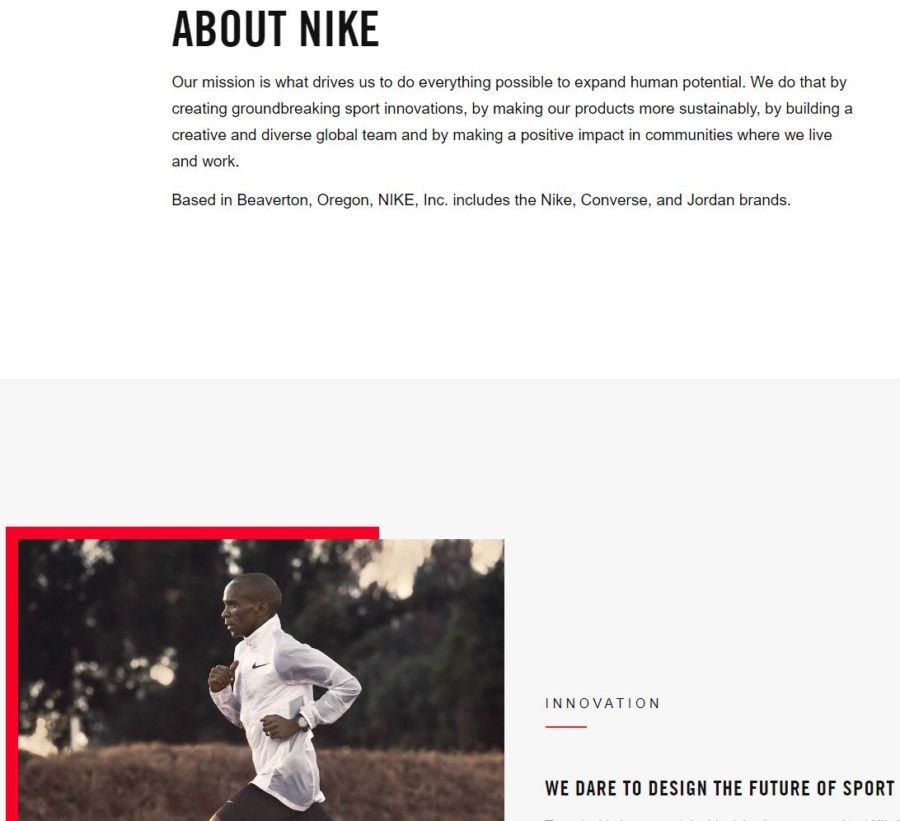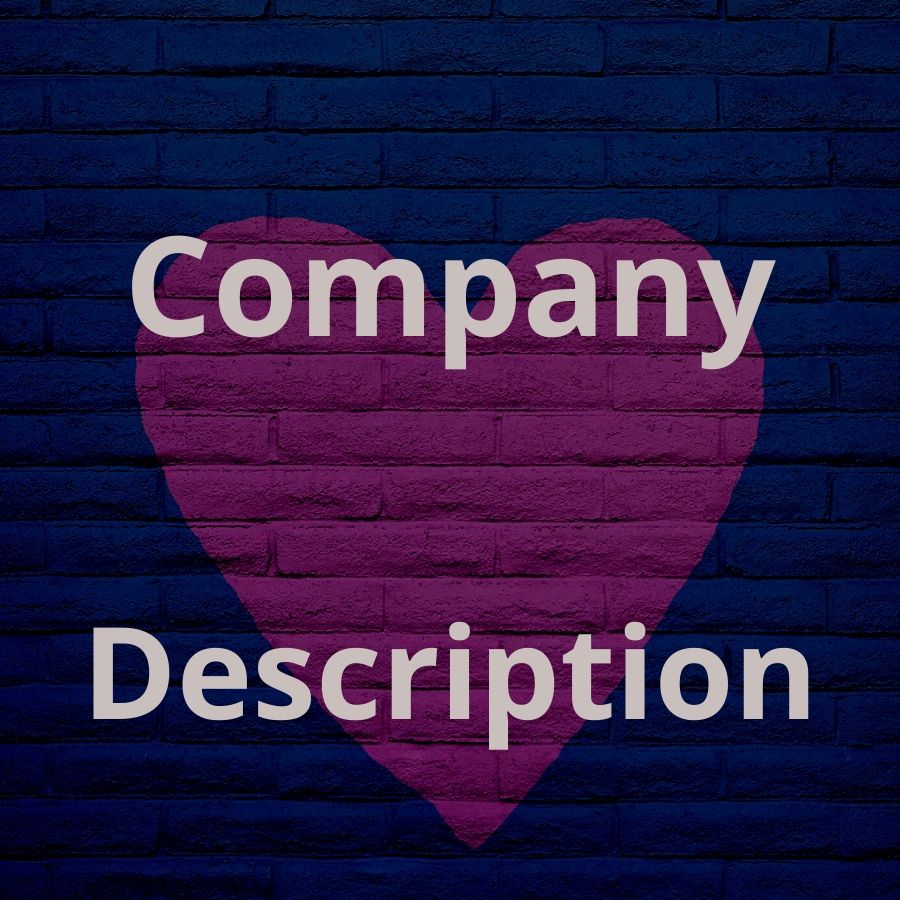How do you write a compelling company description for your business plan? You know your company inside and out. But, it can be difficult to convey those things in a way that will grab readers’ attention. The key is to start with what you know and build on it with some simple methodologies.
The company profile section of the business plan is your opportunity to make a memorable introduction to whoever may be reading. But, most of all, it’s a chance to set your startup apart from other aspiring businesses. Businesses that are after the same investment dollars you are.
If you’ve written a profile for your small businesses on social media (or your own website) then you’re off to a good start. Something is better than nothing. However, there are steps you can take to make your company profile stand out.
The same general principles apply for company descriptions in a business plan and company profiles on websites. You might have the urge to keep it very buttoned-up and boring. That’s an outdated notion, though. Don’t be afraid to let your company’s uniqueness and creativity show in this part of the business plan.
Again, there’s an opportunity here to really resonate with the reader. There are lots of other (critical) sections of the business plan that are going to deal with numbers and other technical aspects. The company profile may very well be the most memorable part. That is, if it’s written correctly.
Approaches to get started
Below, are a few methods to try out when drafting your company description. I suggest you try several of them – even if only briefly. Hopefully, one of these approaches will ring true and capture the essence of your company.
You’ll notice that there’s a lot of bleed-over in these different methodologies. They’re not all 100% unique. What that means is that you can incorporate many of these approaches in your business plan company description. You need not adhere to just one.
Of course, with all these methodologies there are certain things that are going to need to be included. But, don’t let that make you feel stifled. There’s still plenty of room for imagination and authenticity.
The must-haves are:
- What your company does
- Who your customers are
- Where your company is located
- The legal structure
- Who are the founders are
- A brief history
Beyond that, you’re free to approach this task however you see fit. Have fun with it!
Also, much like a mission statement, you don’t want to let your company description go stale. Even after you’re done with your business plan, you’ll want to include a company profile on your website and/or social media. Don’t just set it and forget it. Revisit it from time to time and make sure that it’s reflective of what your companies evolved into.
1) Make it personal
As the founder, you know what the company means to you. That’s a great starting point for a powerful company description. What was it that inspired you to start this business? What was unique about the road that brought you to this point?
A company profile from your perspective gives your business plan a personal touch. Something that will hopefully hit home with the reader. To really go above and beyond you can include a picture of yourself and a signature. A little extra human touch.
2) Emphasize the people behind your product/service
This is similar to the make it personal approach. But rather than focusing on you, the founder, you’ll focus more on your team. Ultimately, it’s people that make a company. Products and services are important, but it takes human effort to make a business successful.
Perhaps you don’t want to focus on team members specifically? You can instead focus on the personality traits or human qualities that encompass the team. Whether it’s passion, diversity, or expertise, you can highlight those factors that make your team exceptional.
3) Tell your company story
People love stories. In this case, you don’t want your company profile to be the length of a novel. But, if it’s intriguing enough it can be on the longer side.
Stories give context. If they’re good, they allow the reader to see the world through someone else’s eyes. You can obviously see the potential benefits of telling a story in your business plan company description.
Maybe you don’t think that your company’s stories are all that interesting. That’s all right. It doesn’t have to be the greatest story ever told, as long as it’s authentic.
4) Highlight your inspiration
This is slightly different than telling a story.
Here, rather, you’re speaking on the things that have inspired you thus far in your company’s journey. You can talk about how you settled on the imagery (logo, colors, fonts) that makes your company unique. What inspired the company’s tagline?
Think about all the little things that comprise your company‘s image – how did you come up with them?
5) Utilize video
Obviously, this approach only works if your business plan is in an electronic format. If that’s the case, you can include a link from (or embed the video into) your business plan.
They say a picture is worth 1,000 words. Well, a video could be worth much more than that. Not to mention, using this unique format would make your business plan exceedingly memorable.
Of course, all the same guidelines apply for a video company profile as a written one. In fact, it might be beneficial to have a video company profile to complement your written one even if you don’t plan on using it in your business plan.
6) Utilize pictures
Maybe you think a video is overkill? That’s fine. If you want to spice up your company description, images might have the same (or even a greater) effect.
Images allow you to get creative. For every point you want to make in your company description, you can include an image that illustrates and complements that point.
Video is dynamic. Images are static. So, if there’s a particular visual that can really clarify what your business is about – an image might be the way to go.
7) Create a timeline
Time is one of the foundations of business (along with money in and money out). So, why not embrace the importance of time by formatting your company description as a timeline.
Everything in your business was decided on at some point in time. So, that makes it easy to include the must-haves in this unique style of company profile.
This format can highlight how fast you are growing and/or how quickly you’ve been able to adapt to your environment.
If you’re not keen on just using a timeline as your company description, it can still serve as a valuable illustration to complement a written format.
8) Be to-the-point
Though most of these ideas emphasize creativity, perhaps that’s not your personality. Maybe it’s not the nature of your business. There is something to be said about brevity.
So, maybe it makes sense for you to cover all the important points in a straightforward manner.
Company history? Here’s a one-sentence answer.
Products and services? Here’s another one sentence answer.
And so on…
A bare-bones business plan might appeal to some readers. It could be that they don’t want to see a flowery company description. Rather, they would appreciate your to-the-point addressing of the subject matter. You can always include more detailed information in the appendix.
Additionally, white space can be visually appealing. A minimalist approach can look good. Plus, I think it’s important not to let your company profile drag on forever. That will just seem vain and will risk losing the reader’s attention.
9) Brag a little bit
A business plan is a sales document for all intents and purposes. It exists to convince people to invest, one way or another, in your startup. So, don’t be too humble when you’re trying to sell your company’s potential.
The company description in your business plan can be a great space to mention everything you’ve accomplished thus far.
Awards, reviews, customer feedback, and anything else that provides social proof that your company is onto something great.
10) Define your new unique selling proposition (USP)
I am a big proponent of the USP. I think it’s what sets your company apart from the competition. Focusing on your USP will help your small business be more successful.
So, if you’re going to need a USP, why not clearly define it early on? Why not highlight it in your business plan?
Think about what makes your products and services better than the competitions’. Think about what would make customers choose to do business with you.
Nothing can describe your company better than singling out what makes you unique.
11) Refer to your mission and vision statements
As discussed in the mission statement post, you should have an idea of what you want from your business. Your mission statement is the driving force behind every decision you make as an owner. Or, at least it should be.
If you have an effective mission statement, you can see how it would serve as a good starting point for a company profile.
In another post on strategic planning (strategy formulation) I encouraged you to solidify your vision for your company. E.g. what your company will look like in 5-10 years. You may not have this written down, officially, as a “vision statement.” But, if you’re going through the strategic planning steps, you should have a good idea of your vision.
What you want from your company and what direction you want to take it are important pieces of your company puzzle. These pieces of information will contribute greatly to the description of your business.
Company description examples and analysis
I’ll give the same advice I did on the mission statement post…
If you’re still struggling with writing a company profile, it might help to look at some examples. No need to reinvent the wheel here.
Don’t copy another company’s description word for word, of course. But, there’s no harm in using a profile you find interesting as a model. By adding in the elements unique to your business, you’ll have a perfectly fine company description to work with. If you want, in the future, you can always start over to make something completely unique.
Here are some quality company profiles I found. I also included some of my thoughts. These are taken from websites, not business plans because company profiles are easier to find.
Nordstrom

First of all, you’ll notice that Nordstrom’s company description utilizes images. Nothing particularly striking, to me. But, it does add to the visual appeal.
They also touch on a little bit of company history on the linked page. What’s notable, however, is the use of a timeline if you click on the Company History link. The Company History is a really great illustration of Nordstrom’s storied history, in my opinion.
Nike

The first thing you’ll notice about Nike’s company description is that they utilize video (in the background) and emphasize their mission statement.
Next, they highlight their commitment to innovation – what some might say is Nike’s USP. Innovation in sustainability is addressed lower on the page too.
After that, they note the people behind the products. Particularly the factors that make their team great.
Delta

Delta, like Nike, puts a video at the head of their company profile. In Delta’s case, however, it’s user-controlled. Not running in the background.
Delta also utilizes a lot of white space on their About page. This format is to-the-point but allows readers to click and learn more – if they so desire.
Like the other examples, Delta takes advantage of the opportunity to toot their own horn. Highlighting the number of customers and destinations served.
Another business plan company description example
In all of my business plan posts, I like to do more than write. I like to take part in the subject matter. However, my previous business plan post put a bit of a damper on my startup idea – a topical, all-natural hair regrowth supplement. It seems that the market might be saturated for that particular type of product.
Nevertheless, for the sake of consistency, I’ll continue to follow along as I always have. Here’s a rough draft of my business plan company profile:
Hair Regrowth Supplement Company, LLC (HRSC) manufactures and wholesale distributes an all-natural hair regrowth supplement for men and women.
The company is headquartered in My Town, USA. Product manufacturing is conducted by a third party partner in Florence, KY. Distribution to retailers is also handled by a third party partner in Prince George’s County, Maryland.
HRSC was founded by Mr. Founder in 2019 with the goal of providing a natural, topical, option for hair loss sufferers. The formula for HRSC’s prototype product was inspired by a little know article in a German medical journal published in 2008. From there, the formula has been improved several times over in an effort to increase its effectiveness and ease of application.
Mr. Founder was frustrated with the (perceived) lack of available options in the topical all-natural hair regrowth market. He wanted an alternative to FDA approved treatments with their lack of efficacy and potential side effects. He experimented with the product himself and was satisfied with the results. This prompted him to explore offering the product to the public. The existing formula offers a safe and potentially effective treatment for individuals in the early stages of hair loss. Most importantly it does so with no downside or adverse effects.
As you can see, I included all of the requisite information. I also decided to make it a bit personal and to highlight my inspiration for the company. Below the text, I might also include a picture or two of the product to give the reader a better sense of what I would be selling.
Make your company description memorable
Hopefully, you now have enough ammo to get your company profile started.
Again, you don’t want it to be too lengthy. But, you also want it to have substance.
If you find that your company description begins to look like a wall of text -add some subheadings in there. That will make this section of your business plan more readable and easier to scan. Not to mention more visually appealing.

